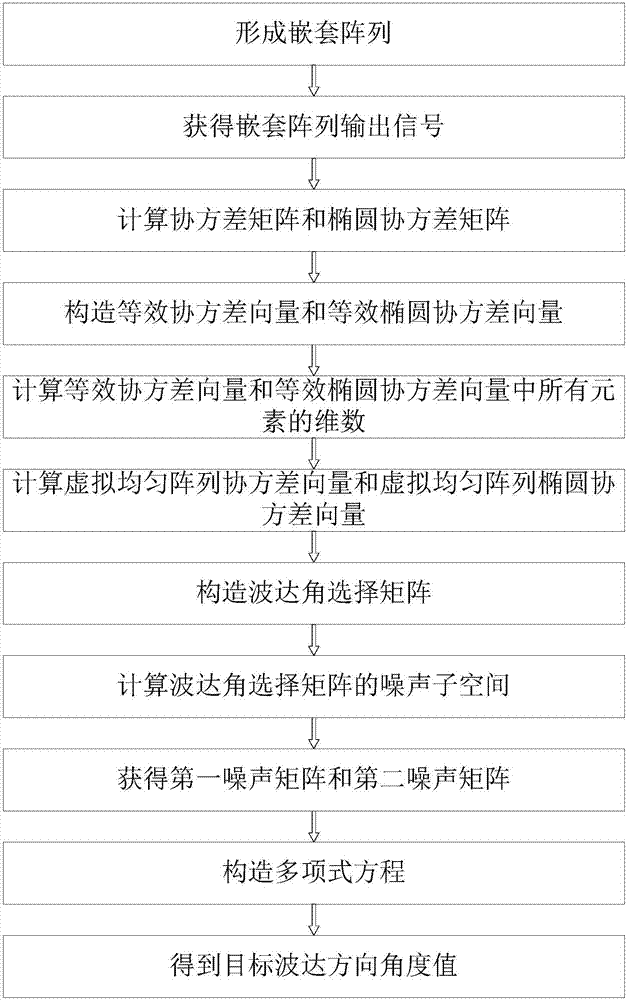Noncircular signal direction-of-arrival angle estimation method based on nested array
A direction of arrival, non-circular signal technology, applied in the field of signal processing, can solve the problems of waste of reconnaissance and positioning resources, no research on non-circular signal processing of nested arrays, inability to estimate enough signals, etc., to improve the utilization of the array. Effect
- Summary
- Abstract
- Description
- Claims
- Application Information
AI Technical Summary
Problems solved by technology
Method used
Image
Examples
Embodiment
[0109] Embodiment: Assume that there are 4 BPSK incident signals in the space, the wavelength of which is λ, and the target DOA angle value θ is obtained.
[0110] In the first step, according to the virtual uniform array covariance vector and virtual uniform array ellipse covariance vector Based on the principle of construction and the method of dimension calculation, the following two results can be obtained:
[0111] One is the virtual uniform array covariance vector The number of elements in is C d =2MN+2N-1=7, the dimension range of elements is -3~3;
[0112] The second is the virtual uniform array ellipse covariance vector The number of elements in is C s =MN+M+N=5, the dimension range of elements is 2-6;
[0113] In the second step, according to the results of the first step, two intermediate variables L are calculated 1 and L 2 :
[0114] L 1 =(C d +1) / 2=4, L 2 =C s +1-(C d +1) / 2=2
[0115] In the third step, according to the intermediate variable L ...
PUM
 Login to View More
Login to View More Abstract
Description
Claims
Application Information
 Login to View More
Login to View More - R&D
- Intellectual Property
- Life Sciences
- Materials
- Tech Scout
- Unparalleled Data Quality
- Higher Quality Content
- 60% Fewer Hallucinations
Browse by: Latest US Patents, China's latest patents, Technical Efficacy Thesaurus, Application Domain, Technology Topic, Popular Technical Reports.
© 2025 PatSnap. All rights reserved.Legal|Privacy policy|Modern Slavery Act Transparency Statement|Sitemap|About US| Contact US: help@patsnap.com



